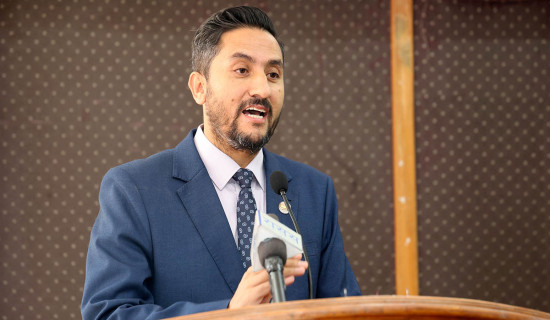- Wednesday, 17 December 2025
Reshaping Cancel Culture In Nepal
The increasing reliance of Nepal on digital platforms for education, discourse, and governance presents both opportunities and challenges. The latest data shows that the telephone coverage reached 124.22 per cent of the population, while the internet penetration rate stood at a whopping 149.23 per cent in the country. This encompasses 42.12 per cent through fixed broadband, 107.02 per cent via mobile broadband, and 0.10 per cent from wireless services. In such a well-connected landscape, the internet has become a basic necessity. On the one hand, it has truly strengthened citizens’ fundamental right to information and freedom of expression and on the other, it has also opened the door to new digital threats like cyber fraud, child exploitation, online harassment, doxxing and social media-fueled violence.
Notably, a fraud linked to the Telegram app, suspected of being used for money laundering is/was a case in point. In response to this, the Nepal Telecommunications Authority ordered telecom providers to block the platform outright. While this reflects a proactive and swift response on the part of the government under cyber governance, concerns grow over culturally embedded phenomena like "cancel culture," which is far less tangible than cybercrime and often ignored to deliberate upon at the policy level. This phenomenon operates less through hacking or surveillance and more through orchestrated character assassination via social media. The aim is often to shame, silence, or dismantle someone’s public reputation, based on perceived transgressions.
Regulatory frameworks
In addressing and regulating these challenges, Nepal has adopted several regulatory frameworks that includes Telecommunications Act (1996), the Electronic Transaction Act (2006), Consumer Protection Act (2018), IT Policy (2023), and Cyber Security Regulation (2020), among others, for addressing technical threats but lacks specific tools for navigating these emergent socio-digital battlegrounds and handling to fast evolving cancel culture. While this form of digital ostracism gains ground, there is an urgent need to understand its anatomy and relevance to evolving circumstances of digital threats like cancel culture.
Globally, cancel culture has become a debated and often misunderstood phenomenon. According to Ryan S.C. Wong’s 'Analysis In Contexts', cancel culture encompasses publicly banishing individuals accused of misconduct, sometimes even without due process of law. Moreover, Wong suggests that it can empower marginalised voices or become a tool of ideological vendetta. In contrast, Hailey Roos, in her thesis on 'With (Stan)ding Cancel Culture', traces the roots of the practice to “Black Twitter”(now X), where it developed as a mechanism for collective accountability against racism, sexism, and social injustice.
Roos contextualises cancel culture through historical events such as the WWII internment of Japanese-Americans, the National Football League (NFL)’s silencing of Colin Kaepernick for his anti-racism protests and the media’s handling of Donald Trump’s hush-money scandal, seeking to erase dissents. These examples highlight a key shift in the relocation of power from state institutions to the crowd-sourced judgments of digital communities.
In the analysis of the mechanics of celebrity monitoring, Roos makes the case that followers frequently turn into violent upholders of moral purity through parasocial connections. Notable cases like Eminem's song "Stan" popularised the word "stans," which goes beyond appreciation to become protectors. They launched hashtag campaigns like #KanyeWestIsOverParty, sometimes based on misrepresented facts, to protect their idols and suppress dissents. These performances often mirror principles of social learning theory that define actions which gain approval through online, repeating the likes, retweets, shares in social media. Furthermore, Irving Janis’s concept of groupthink is also appropriate here 'digital spaces', reward conformity, not critical thought. Social media’s algorithm intensifies this, feeding users content that reflects their beliefs and past engagement, forming echo chambers that simulate mass consensus.
Restorative practices
In view of scholars they advocate for restorative practices and fandom behaviours to understand their broader cultural and political implications, highlighting authentic allyship and social change practice. For example, one illustrative case is the Kendall Jenner-Pepsi ad, which was pulled after being accused of trivialising the Black Lives Matter movement.
We frequently encounter public shaming, digital ostracism, and coercive conformity on online platforms. So the fundamental question is whether this trend evolves into a force for social justice or social fear depends on our ethical choices and behaviours. As Nepal’s digital infrastructure transforms, we must ask ourselves tough questions: Can we foster accountability without losing our humanity? By fostering informed discussion, legal framework and literacy, we can ensure that cancel culture serves its intended role for holding the powerful accountable, without silencing the vulnerable ones.
(The author is an advocate.)








-square-thumb.jpg)








